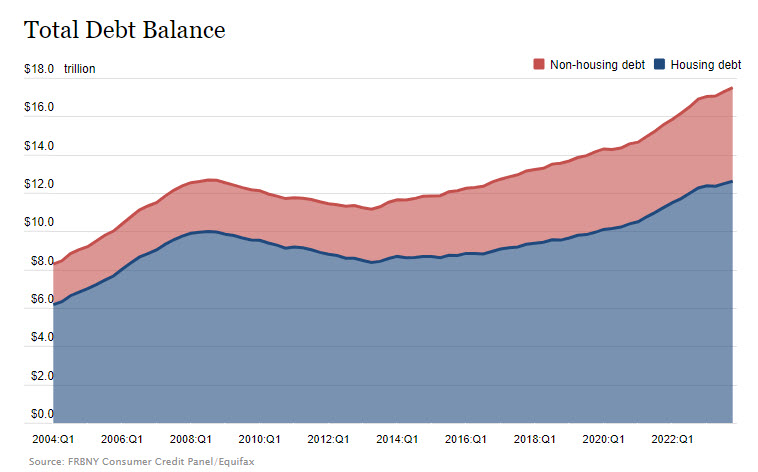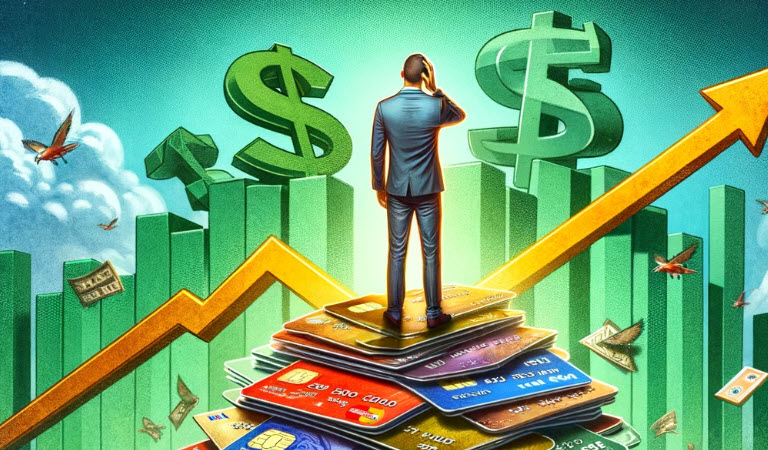The Federal Reserve Bank of New York made the startling discovery that the total credit card debt owed by Americans had risen to a whopping $1.13 trillion. The information, which comes from an extensive study on household debt, highlights a $50 billion increase in credit card balances in just the last quarter of 2023—a 5% rise.

The Growing Delinquencies Tide
Unbelievably, there is a correlation between the rise in credit card debt and an increase in delinquency rates, especially for the younger millennial generation (ages 30 to 39). These people are experiencing increased financial stress on top of their considerable student loan obligations, which is concerning since it indicates a pattern among younger and lower-class demographics.
The Conundrum of Economics
There are observable pockets of consumer financial overstretching notwithstanding the economy’s general strong performance. The pressure is a result of rising costs in necessities like food, petrol, and shelter. A growing number of cards are being flagged by the Consumer Financial Protection Bureau as being permanently indebted, having more interest and fees than they can afford to pay off, or experiencing payment arrears.
Increasing Credit Card Interest Rates’ Effects
Already somewhat higher than average, credit card interest rates have increased dramatically in lockstep with the Federal Reserve’s 11 rate hikes in a row, including four in the year prior. The average annual percentage rate has risen above 20% as a result of this upward trajectory, creating a new high.
Unstoppable Credit Card Debt Ascent
Experts like LendingTree’s chief credit analyst Matt Schulz forecast a steady increase in credit card debt due to ongoing inflation and rising interest rates. Credit cards are being used more and more, especially since they’re still easier to get than other kinds of loans. However, this reliance takes away from other long-term financial objectives.
The Disappearing Safety Nets of the Pandemic Era
Because of government stimulus programs, many American households had accumulated significant cash reserves during the pandemic, but those holdings have since diminished. The credit card debt that were accumulated throughout the Covid-19 era have gradually increased due to the gradual depletion of those savings.
Handling Debt from Credit Cards
There are ways to get out of debt if you have credit card debt. The load can be reduced by negotiating with card issuers for possible rate reductions, consolidating debt with better loan options, and practicing responsible money management. In times of financial hardship, the American Bankers Association stresses the value of prompt engagement with issuers as it may lead to opportunities for help or relief measures.
Understanding these factors and using proactive debt management measures become essential for financial well-being as the credit card debt landscape changes.
Stay up to date on other relevant news in our “News and Politics” section.





